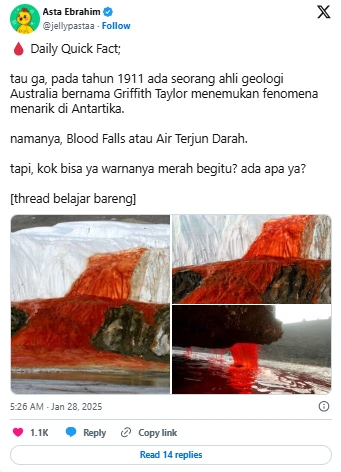In one of the most inhospitable places on Earth, Antarctica hides a shocking phenomenon—Blood Falls, a bright red waterfall flowing from the Taylor Glacier. First discovered in 1911 by Australian geologist Griffith Taylor, the sight of red liquid spilling over the pristine white ice left early explorers and scientists baffled.
At first, scientists believed the red color came from pigmented algae, but no biological evidence supported this. The real cause turned out to be chemical: the water is rich in iron, and when it emerges from the glacier and meets oxygen, the iron oxidizes—similar to rusting metal—giving the falls their blood-like color.
But where does this iron-rich water come from? The source lies beneath the glacier: a hidden subglacial lake, sealed off from the surface for over one million years. Despite Antarctica’s freezing temperatures, the lake remains liquid because it’s extremely salty, lowering its freezing point. This isolated body of water has created one of the most unique and extreme ecosystems on the planet.
Inside this underground lake, scientists discovered microbial life—organisms that survive without sunlight or oxygen, feeding on iron and sulfur. These extremophiles thrive in conditions that would be deadly to most life on Earth. Their existence challenges our understanding of where life can exist and supports the idea that similar life forms could survive on icy moons like Europa or Enceladus, where liquid water may exist under thick ice layers.

Blood Falls also serves as a natural archive of Earth’s ancient climate. The trapped water, unchanged for over a million years, holds clues about the planet’s past ecosystems and glacial movements. As climate change accelerates, understanding how these systems work is crucial for predicting the future of Earth’s polar ice sheets.
In the end, Blood Falls is far more than a strange red waterfall—it’s a window into Earth’s ancient past, a testing ground for life in extreme conditions, and a potential blueprint for discovering life beyond our planet. It reminds us that even in the most frozen, desolate places, life finds a way—and that the greatest mysteries may lie hidden beneath our feet.





